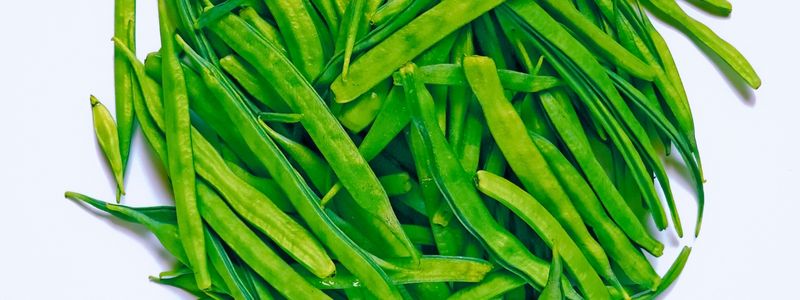Guar gum, a natural polysaccharide derived from the seeds of the guar plant (Cyamopsis tetragonoloba), has played a vital role in various industries and civilizations throughout history. Originating in ancient India, this versatile ingredient has evolved into a global commodity with applications in food, pharmaceuticals, cosmetics, and even oil drilling. Its journey from humble agricultural beginnings to a significant industrial component is a fascinating story of adaptation and innovation.
Origins of Guar Gum in Ancient India
The history of guar gum begins in the Indian subcontinent, where the guar plant was first domesticated. Known locally as "cluster bean," the guar plant thrived in arid regions due to its drought-resistant properties. Archaeological evidence suggests that guar was cultivated as early as 2000 BCE, primarily as a vegetable and animal fodder.
In ancient India, guar seeds were ground to create a thickening agent for cooking. This natural gum found use in traditional recipes, providing texture and consistency to dishes. Its ability to absorb water and form a gel-like substance was well-known among early farmers and cooks, although they may not have fully understood the science behind it.
Guar Gum's Transition to a Commercial Commodity
Early Trade and Export
The guar plant remained a local crop in India until the 19th century when British colonizers recognized its potential. With India's integration into global trade networks, guar seeds and gum began to find markets in Europe. Initially used in food and textile industries, its value as a thickener, stabilizer, and emulsifier gained attention.
Scientific Discovery in the 20th Century
The true potential of guar gum was unlocked in the early 20th century when scientists analyzed its chemical properties. Guar gum is composed mainly of galactomannan, a polysaccharide that exhibits remarkable water-binding and thickening properties. This discovery revolutionized its applications across industries.
During World War II, guar gum gained prominence as a substitute for locust bean gum (derived from carob seeds), which was in short supply. By the mid-20th century, guar gum became a preferred thickening agent in various products, including ice creams, sauces, and baked goods.
Guar Gum in Modern Industry
Today, India remains the world's largest producer of guar gum, contributing nearly 80% of the global supply. Rajasthan, Gujarat, and Haryana are the leading guar-producing states in India. The guar gum industry has expanded globally, driven by its versatility and wide range of applications.

Applications Across Industries
1. Food Industry
Guar gum is a popular food additive used as a thickener, stabilizer, and emulsifier. It is found in:
- Ice creams, to prevent ice crystal formation
- Soups and sauces, for improving texture
- Gluten-free baked goods, to enhance dough elasticity
2. Pharmaceuticals and Healthcare
In the pharmaceutical sector, guar gum is used as a binder in tablets and as a laxative due to its high fiber content. It also serves as a stabilizing agent in suspensions and emulsions.
3. Cosmetics and Personal Care
Guar gum is commonly used in shampoos, conditioners, and lotions for its thickening and conditioning properties. It improves the texture and stability of cosmetic formulations.
4. Oil and Gas Industry
One of the most significant modern uses of guar gum is in hydraulic fracturing (fracking). Its viscosity-enhancing properties make it an ideal component in fracking fluids, which are used to extract oil and natural gas.
5. Textile and Paper Industries
In the textile industry, guar gum acts as a sizing agent, improving fabric strength and texture during weaving. Similarly, in paper manufacturing, it enhances sheet formation and printability.
6. Pet Food and Animal Feed
Guar gum is a common additive in pet foods, improving moisture retention and texture.
Environmental and Economic Impact of Guar Gum
Sustainable Crop
The guar plant is highly sustainable due to its ability to thrive in arid conditions with minimal water and fertilizer. It also enriches the soil with nitrogen, making it an environmentally friendly crop. This sustainability has contributed to its growing demand in industries that prioritize eco-friendly sourcing.
Economic Significance
For rural farmers in India, guar cultivation is a significant source of income. The guar gum industry supports millions of livelihoods, from small-scale farmers to large-scale processing units. The global demand for guar gum, especially in the oil and gas sector, has created a robust export market, boosting India's economy.
Challenges in the Guar Gum Industry
Despite its many advantages, the guar gum industry faces several challenges:
1. Price Volatility
The price of guar gum is highly volatile, often influenced by fluctuations in demand from the oil and gas industry.
2. Climate Dependence
Guar cultivation relies heavily on monsoon rains. Erratic weather patterns due to climate change pose risks to production.
3. Competition from Synthetic Alternatives
The availability of synthetic thickeners and stabilizers presents competition to natural guar gum in certain applications.

The Future of Guar Gum
As industries increasingly prioritize sustainability and natural ingredients, the demand for guar gum is expected to grow. Innovations in guar processing and cultivation techniques could further enhance its applications and profitability. Research into genetically modified guar plants may also improve yield and quality, addressing some of the industry's challenges.
Moreover, guar gum's potential as a biodegradable material opens doors for its use in eco-friendly packaging and other sustainable products.
FAQs About Guar Gum
Conclusion
The history of guar gum is a testament to its adaptability and versatility. From its origins in ancient India to its prominence in modern industries, guar gum has proven to be an invaluable natural resource. As global markets continue to embrace sustainability and natural ingredients, guar gum’s significance is only expected to grow, solidifying its place in the intersection of tradition and innovation.
Web Design & Digital Marketing by Opal Infotech


